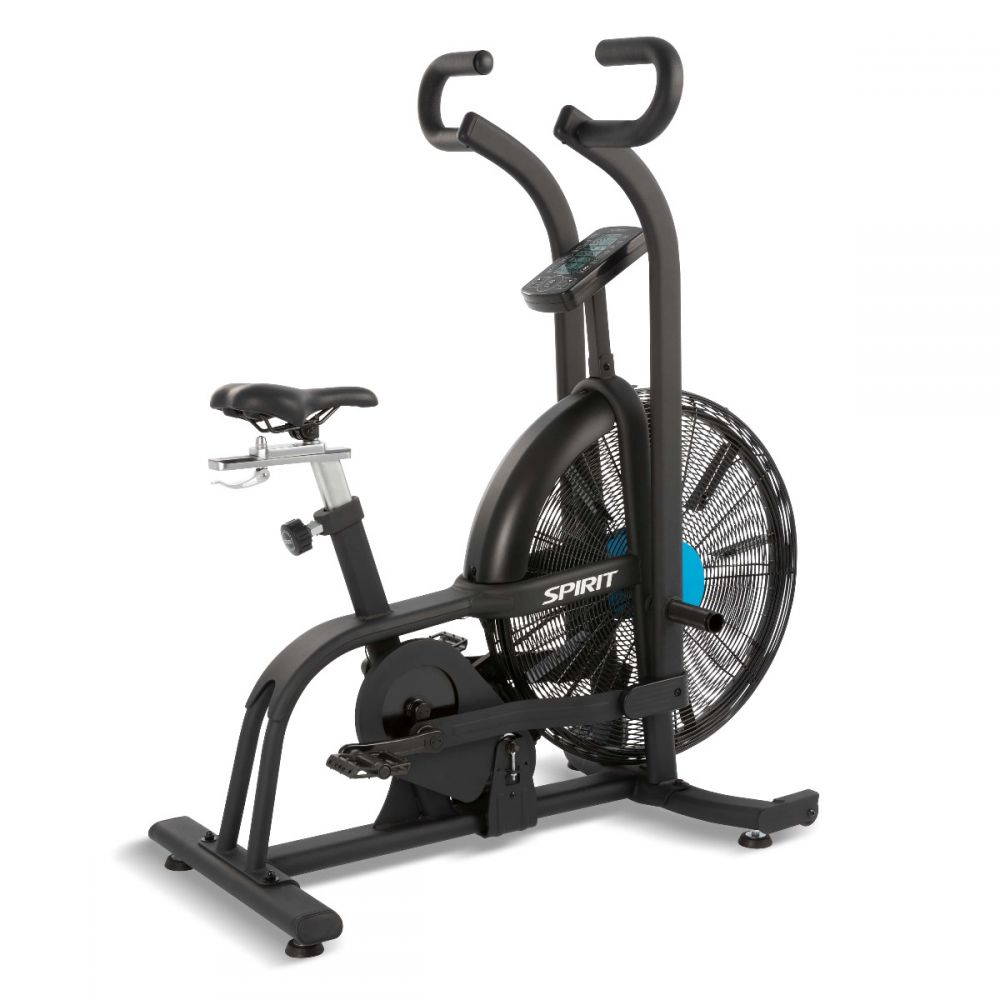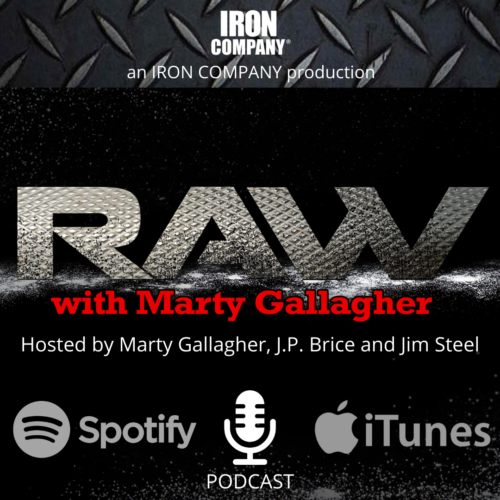
The Fan Bike - Benefits Of Quad Limb Cardio Training
Fan Bike. New protocol for a venerable tool.
I have never enjoyed using indoor cardio machines, with the exception of a fan bike, much preferring to obtain my cardio conditioning outdoors: sprinting or running up steep hills, perhaps a steady-state cross country run sucking in super-oxygenated air while rolling through picturesque landscapes. This all ends in January. You can’t run wooded trails covered by snow. You need to see roots and holes while avoiding the ankle-breaking rocks and slippery icy spots. You can’t run in the rain or if the ground is frozen solid. So, come January I am driven indoors.
Indoor aerobic exercise done on cardio machines seems to make time stand still. The minutes tick by like hours. This is a psychological phenomenon related to a lack of engagement. When performing steady-state cardio training seated on a exercise bike, 100% of the exercise effort is generated by the legs. The legs move in one direction, forward, and they move in a small, tight mechanical circle. The Mind is free to roam, the hands are free to text, tweet, talk on the phone or send e-mails.
Because the athlete is seated, because the mechanical groove is frozen, because there is no danger, the athlete can pedal and “space out” without consequence. This is a bad thing. One of the joys and benefits of intense exercise is that it shuts down preoccupation and eliminates split consciousness. In order to deal with the severity of a hardcore training effort, Mind and body must unite to deal with the task. There can be no maximum effort if the trainee is mentally preoccupied, i.e. planning, reflecting, daydreaming.
Intense exercise demands your full attention, otherwise it’s not intense. When confronted with a physical task of sufficient magnitude the conscious mind will fall silent of its own accord. The little voice in our head, the thinker, the “observer” (Krishnamurti’s label for the ceaseless internal talker) needs to shut down or go offline during maximum physical efforts. Full and complete concentration cannot occur unless and until the voice in our head falls silent. Intense exercise demands full and complete psychological engagement.
I must be engaged in my wooded trail runs or my lack of attention will have immediate consequences. My eyes focus on the trail 5-15 feet in front of me. The only way to move with any degree of velocity, with any speed, is with full attention. One lapse of visual concentration at the wrong time will send you sprawling. I have tripped, fallen and slipped on many occasions. Nature teaches with a big stick.
Riding a leg-only aerobic devices for 30-45 minutes is, for me, insanely, maddeningly boring. Apparently, I am not alone. Device makers have turned once plain-Jane stationary bikes into Cadillac Escalades. Makers install televisions into stationary bikes to distract the rider. The latest hi-tech engagement tool? Watch a built-in monitor and follow an imaginary cycling route or follow along as a perky, hi-energy bike instructor takes you through a cardio workout.
My friends will text, tweet, answer e-mails and take calls while they pedal the upright exercise bike or the recumbent bike. By multitasking, the cardio machine user distracts themselves from the unrelenting boredom of steady-state, leg-only machine cardio. They also dilute results. Pedaling in one direction in small, tight circles is, for most trainees, a terribly inefficient use of cardio training time.
There is a better way. Stay engaged by performing quad-limbed cardio. Involving the arms to generate the cardio effort is demonstrably superior to leg-only cardio and quad-limb cardio precludes using the phone. The solution to engagement is to use a primitive aerobic machine, the Fan Bike, and wed it to a unique protocol. Being engaged makes the time pass quickly and optimizes aerobic benefit in a way unobtainable by those that multi-task during cardio.
Quad-limbed Tool
When it comes to obtaining optimal benefit from aerobic exercise, using four limbs, arms and legs, is superior to using two limbs, legs only. Dr. Len Schwartz, inventor of Heavy Hands, pointed out 40 years ago that cross country skiers “loaded” their arms by pushing off with each stride stroke. Because of the quad-limbed effort, the cross country skiers generated off-the-chart VO2 maxes: the use of arms to aid the effort “spread” the effort. The same amount of work done with legs only is made much easier if the arms aid in the effort.
One way to involve the arms in the aerobic effort is to practice indoor cardio using a push-pull Fan Bike. First made popular by Schwinn, the Aerodyne Fan Bike has been popular with hardcore athletes since it was first introduced in the 1980s. Some modern Fan Bikes are feeble imitations of the original and some modern versions improve on the original. Old School mechanicals make the Fan Bike resemble a steam locomotive in full flight. Arms and legs are taxed maximally and optimally, with varying degrees of resistance offered in every direction.
Our protocol makes use of the Fan Bike in a new way. The challenge was to come up with a completely engaging and effective cardio protocol, one that avoids the commonly used steady-state mode. Could we adapt the “sprint-recover-sprint again” outdoor protocol for the Fan Bike? This Fan Bike has several quantifiable advantages…
- Quad-limbed: a heavy-duty Fan Bike allows the trainee to maximally stress arms and legs. The resistance on the fan bike is proportional to your strength and endurance levels. The faster you go, the more resistance you generate. Genius. Both the stone-cold beginner and elite athlete can use this tool with equal benefit.
- All mechanical: devoid of sophistication, this machine does not plug into a wall. The modern heavy-duty fan bike is a work of mechanical art. Its ruggedness makes it more difficult and ergo, superior to hi-tech leg-only cardio devices. Low-tech does not require house calls from a computer nerd when a circuit board blows, or you have a malfunction.
- Forwards and backwards: why is this such a big deal? You just doubled the number of doable exercises. For (nearly) every conceivable forward direction drill, there is an identical drill to be done pedaling backwards. What better way to work both sides of a limb then go all out one direction – then follow with an all-out mirror-image effort?
- Go all out (relatively) safely: it is inherently dangerous attempting to exceed a current best in the bench press, squat or deadlift. A bad miss or technical miscue can get you hurt. Ditto for sprinting: exhilarating, effective, dangerous, when running at 100% of capacity, injury always lurks. Giving 100% on the Fan Bike is safe, by comparison.
Protocol rationale: the protocol was designed to be used with the Fan Bike. Could we mirror both the hardcore progressive resistance strategy (all-out effort, rest, repeat) and the sprinting strategy (run 100% for a short distance, recover, repeat) using a Fan Bike in unique and unusual ways? Drills were devised. The way in which each exercise was done is always the same…
- Start off gradually – bring core muscle temperature up
- Build to 50% of all-out capacity – attain 50% and stay there for 10-20 seconds
- Accelerate gradually from 50% to 80% - attain 80% and hold for 5-10 seconds
- Accelerate from 80% to 100%. Try and exceed your current WATTS personal record
- Decelerate gradually
- Move to the next drill
- Recover breath during the zero to 50% build-up of the next drill
The report card is WATTS. The key to being able to replicate sprint and lifting protocols was to find a way in which to quantify the effort. What was needed was an intensity barometer: exercise effort reduced to a single number. What was needed was a way to quantify the bursts, the sprinting we would do as we sought to better our current WATTS personal best effort.
A lone number allows for comparison, session to session, week to week, month to month. By having a numeric value assigned to peak physical effort, the athlete can establish personal best efforts and then seek to better them. Elite athletes know that the key to physical progress is in incrementally improving performance.
Ideally, the athlete is able to wear a heart rate monitor during the Fan Bike session. When the athlete tops out in a drill, they note their WATTS reading and glance at the heart rate monitor. The heart rate is simply a reflection of the effort. There is no effort to manipulate the heart rate, rather simple curiosity over how hard the heart is working in relation to the drill. The heart rate is noted in passing. Seat height is another terrific variable: the thigh position changes dramatically depending on how high (easier) or low (harder) the seat position is set.

Logging Session Data
Date: 11-29-19 bodyweight: 199 how I feel?: 7 on a scale of 1-10, Average.
Drill WATT record Heart rate
- Legs only, forward 41 144
- Legs only, backward 38 138
- Arms only, forward, pushing 38 155
- Arms only, pulling, over-grip 35 151
- Arms only, pulling, underhand grip 33 143
- Arms & legs, forward 61 165
- Arms & legs, backward 54 158
- Arms & legs, forward, standing 66 177
Cross-limb and Single-limb Drills
I also devised more exotic variations….
- Left leg/right arm, forward
- Left leg/right arm, backwards
- Right leg/left arm, forwards
- Right leg/left arm, backwards
- Left arm, push, overhand grip
- Right arm, push, overhand grip
- Left arm, pull, underhand grip
- Right arm, pull, underhand grip
- Left leg – fast as possible forward and backward
- Right leg – fast as possible forward and backward
Sometimes I stick with the core eight drills and do two complete cycles. Other times I will work through all the cross-limb and single-limb variations. I always finish a Fan Bike session with the fastest, most powerful Fan Bike drill: arms and legs, forward, while standing. I am trying to set WATTS records on every drill. Not that I do, but the striving ensures the cardio benefits. Giving 100% on an off day reaps the cardio benefit we seek.
If you are looking for a productive alternative to aerobic drudgery that begs for distraction and multi-tasking, get hold of an Old School Fan Bike and wed it to the WATTS sprint protocol. Establish WATTS records (and RPM if you like) and log session results. Why not wear a heart rate monitor and see how the heart reacts in relation to the degree of exercise difficulty? Revolutionize your aerobic efforts using this primal tool. To overcome aerobic stagnation, think outside the cardio box.
About the Author
As an athlete Marty Gallagher is a national and world champion in Olympic lifting and powerlifting. He was a world champion team coach in 1991 and coached Black's Gym to five national team titles. He's also coached some of the strongest men on the planet including Kirk Karwoski when he completed his world record 1,003 lb. squat. Today he teaches the US Secret Service and Tier 1 Spec Ops on how to maximize their strength in minimal time. As a writer since 1978 he’s written for Powerlifting USA, Milo, Flex Magazine, Muscle & Fitness, Prime Fitness, Washington Post, Dragon Door and now IRON COMPANY. He’s also the author of multiple books including Purposeful Primitive, Strong Medicine, Ed Coan’s book “Coan, The Man, the Myth, the Method" and numerous others. Read the Marty Gallagher biography here.




